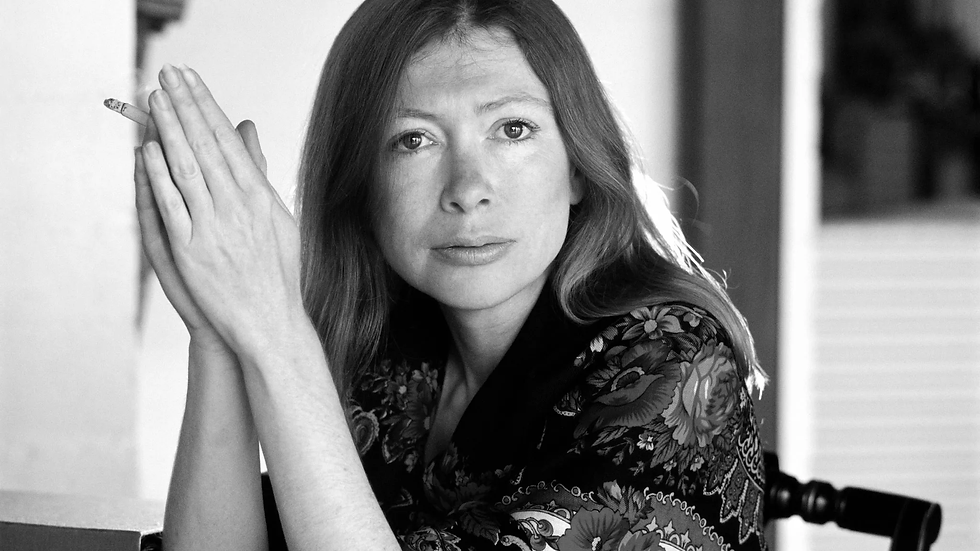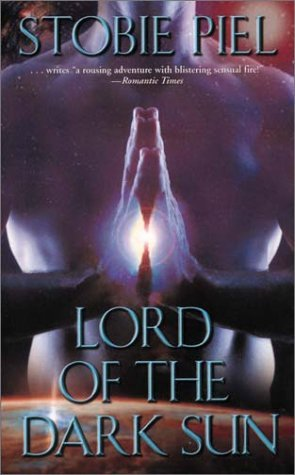A Comparison of Didion’s In Cold Blood and Capote’s Slouching Toward Bethlehem
- Christina Francine

- Apr 22
- 5 min read
By Christina Francine
Although Joan Didion’s Slouching Toward Bethlehem and Truman Capote’s In Cold Blood are
considered literary or new journalism, their work has some differences. Of course, there are other similarities, such as observations about human nature, seemingly trying to solve a life mystery about people, and creating a grim atmosphere. Both play with facts using the lens of their opinions, which should be considered when reading their work. Authors should be careful; otherwise, fact will not be fact and truth will be lost.

Literary journalism is a journalistic form that reads like a novel. Every piece is supposed to be true, unlike a novel. No scene, word, or sentence can be a lie. It is a style of newspaper and magazine writing that depicts a moment in time and uses realistic fiction to portray daily life. Interestingly, Capote considered his literary journalism new, yet others wrote in this form during that time, too. Capote seems to take liberties with facts about true crimes and murderers. Although he wasn’t sure, he wrote what both Dick and Perry thought and spoke. For example, “During the first of his three years in prison, Perry had observed Willie-Jay from a distance, not with interest but with apprehension” (42), and then Capote presumes to know what thoughts and statements the Clutters made during their captivity. Factual means nothing made up, yet Capote must have made this up. He goes on to mention numerous facts and lists for readers. There are so many “facts” about Perry and Dick that one wonders if Capote is trying to prove them.

Didion took liberties, too. She took facts and explained them as if she knew what was inside people’s thoughts, and why they said them. When she talked about hippies in her essay called “Slouching Toward Bethlehem,” she assumes to know what Dan and Max want, saying “Don and Max want to go out to dinner, but Dan is only eating macrobiotic” (87). She also offers how someone feels, saying Joan Baez “lives quietly” and “believes that her days at the Institute, taking and listening to Irasandperl are all bringing her closer to contentment than anything she has done so far” (54-55).
Both Capote and Didion took multiple liberties. Do all literary journalists do this, and if so, how long will it be before the fact and fiction blur?
Capote and Didion write differently about community. On the one hand, Capote writes about how a wonderful community helps one another and gets along, yet a family is murdered, and the community isn’t there for them. The community didn’t help the Clutters. Susan Kidwell was Nancy Clutter’s young friend. She knew Nancy very well and was at her house often, but she didn’t help Nancy.
On the other hand, Didion writes about the lack and establishment of community, especially in the second half of her book. She writes about how people come and go to California constantly, how many come attempting to find something that is not there. Didion calls “Hollywood the Destroyer” (150) and says there is a system where it is “impossible to work ‘honestly’” (152). One reason she has is, “[W]e start deceiving ourselves into thinking not that we want something or need something, but that it is a moral imperative that we have it, and that is when we are in terrible trouble” (163). However, after living in New York for several years, Didion returns to what she knows in California. I believe that the oddity of disconnecting in California was what she grew up with. It was her community. Though many people came and left, the natives stayed, or came back later, as did Didion, because of an odd sense of community.
The way Capote and Didion built their books is different. Capote began with a story and added tons of facts. Although these seemed to get in the way, a story unfolded, with each chapter providing a plot, characters, and mystery. Capote made grim observations about human nature. Dick and Perry didn’t grow as the story moved along, as most fictional characters do. Like news reporting, In Cold Blood shares the most important or interesting and sprinkles details later. A news report must contain answers to 5 basic questions: who, what, where, when, and why. Capote answers these in the first part of his book. The who is Perry and Dick, the what is members of the Clutter family being murdered, the where is at the Clutters home in Kansas, the when is on November 15th, 1959, and the why is greed. The mystery was why such a tragedy occurred. Capote investigates Perry and Dick’s personality and background only to leave readers to realize the answer isn’t concrete. Perry came from a dysfunctional background, but Dick did not. He divides In Cold Blood into four sections, each presented like a vignette.
Didion began with a poem by Yeats called “The Second Coming.” She explains her title in a Preface stating ““Slouching Toward Bethlehem” is also the title of one piece in the book, and that piece, which derived from some time spent in the Haight-Ashbury district of San Francisco, was for me both the most important of all these pieces to write and the only one that made me despondent after it was printed” (xi). In the essay, she shares what disturbs her about human nature in San Francisco. She explains the main problems as she views them with, “Who cares?, Nobody cares” (122) and later grimly speaks about community: “We were seeing the desperate attempt of a handful of pathetically unequipped children to create a community in a social vacuum” (122). Again, Didion speaks about community. Since she didn’t have a story, she didn’t have characters that moved along with each essay as Capote did. She broke her book into three parts. The first part shared the misleading political and social life of average Californians. The second part focused on herself and self-respect. She also writes about home and morality. The last section reveals Didion’s state of mind, which is negative and bleak. Her position seems like a realist and observer. Slouching Toward Bethlehem doesn’t appear like a news report as Capote’s book does.
Didion and Capote’s various and similar ways of using literary journalism provided a wider understanding of the genre. If authors are not careful, fact will not be fact any longer. These matters are because the truth will then be lost. Wise readers keep an author's lens in mind when digesting literary journalism.
Sources
Capote, Truman. In Cold Blood. Vintage Books. 1965: Print.
Didion, Joan. Slouching Towards Bethlehem. Farrar, Straus and Giroux. 1961: Print.
Good Reads. In Cold Blood. Accessed: April 22, 2025. https://www.goodreads.com/book/show/12477
Good Reads. Slouching Toward Bethlehem. Accessed: April 22, 2025. https://www.goodreads.com/book/show/4073199-slouching-towards-bethlehem
Konyves Magazin. Accessed: April 22, 2025. https://konyvesmagazin.hu/friss/truman_capote_joan_didion_vogue_archivum_google_arts.html
Them and Us. Accessed: April 22, 2025 https://www.them.us/story/sad-queer-books-joan-didion
Troy Media. Accessed: April 22, 2025.






Comments